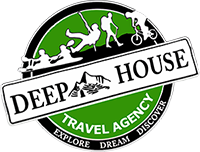Information About Cusco
Sitting high in a mountain valley at 3,400 meters above sea level, Cusco provides an enchanting introduction to the world of the Andes. Once the capital of the mighty Inca empire, the city today is the gateway to Machu Picchu.
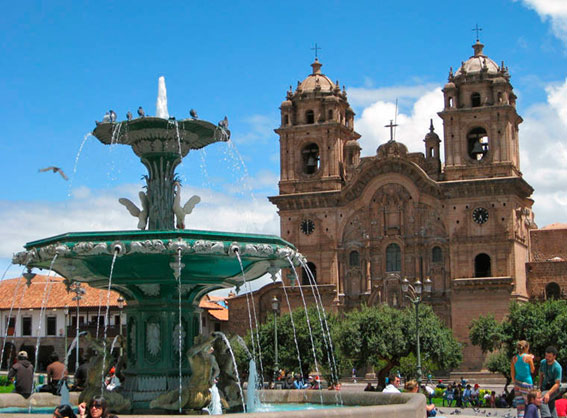
Exquisite churches, fantastic museums, and narrow cobbled streets in the historic center merit at least a few days’ worth of exploration. Add to that stunning Inca ruins both within the city and in the surrounding hills and you’ve got a recipe for travel magic. Cultural festivals throughout the year, including Señor de los Temblores and Inti Raymi, highlight the region’s mixed Spanish-indigenous heritage and illustrate the continual renewal of the community’s long-held Andean traditions.
Pre-Inca Cusco
900 to 1200 AD – Development of Killke culture. During excavations in the Cusco basin, archaeologists have uncovered irrigation systems, temples, and ceramics dating from this period.
1100 AD – Construction of Sacsayhuaman by Killke.
*Killke artifacts are on display at the Museo Historico Regional, the Museo Inka and Museo de Sitio Qorikancha in Cusco city.

Inca Cusco
12th century AD – Cusco begins to develop as city-state, first co-existing with neighboring ethnic groups and then gradually absorbing them. Inca oral traditions remember Manco Capac as the first Inca king. During the next 200 years, the Cusco kingdom organized a massive labor force to improve the basin. They dried a swamp, built agricultural terraces and filled them with fertile soils. The palace of Manco Capac (located on the slopes above San Cristobal Church) dates from this time period.
1438 AD – The chronicles of the conquest record 1438 as the year Tito Cusi Inca Yupanqui (who renamed himself Pachacutec) successfully defended Cusco from an attack by the fierce Chanca tribe. From this point forward, the Cusco kingdom began to expand its territory. The city of Cusco remained the political and religious center of the Tawantisuyo (Union of Four Quarters).
Many of the city’s extant Inca ruins date from this period. After the Conquest, colonial buildings were erected on Inca foundations. Notable examples of this hybrid architecture include Santo Domingo Church atop of Qorikancha and the Jesuit Church atop the palace of Huayna Capac on the Plaza de Armas.
The rectilinear layout of Cusco’s streets is another Incan legacy. After 1438, Pachacutec ordered the city rebuilt in the shape of a puma. The rivers Saphi and Tullumayo were canalized to control flooding and formed the outlines of the puma’s body (the rivers continue to run underground). Its loins centered on Qorikancha and its head was represented by Sacsayhuaman. This area of the city was reserved for the elite: the Inca and his lineage, priests, noble families and their retinues. Separate areas were designated for agriculture, artisanry, and industry.
1527 AD – The death of Huayna Capac, 11th Inca king, sparks a war of succession between his sons Huascar (based in Cusco) and Atahualpa (based in Ecuador). The civil war ends when Atahualpa’s generals occupy Cusco and capture Huascar.
The Conquest
1531-1533 AD – Francisco Pizarro with 168 soldiers lands on the shores of the Inca Empire, devises the capture of Atahualpa in Cajamarca, and then executes the Inca king, marking the end of the Inca Empire — though resistance efforts will continue for decades. Pizarro finally arrives in Cusco in November 1533 and installs Manco Inca as the new puppet king.

Colonial Cusco
1535 AD – After suffering abuses at the hands of Spanish settlers, Manco Inca flees Cusco and organizes a rebel force to overthrow Spanish rule.
1536 – 1537 AD – Manco Inca’s forces lay siege to Cusco in May 1536. A separate force attacks Pizarro’s newly founded city in Lima, but without success. In January 1537, Spanish soldiers and native allies launch an attack on the Incas’ headquarters in Ollantaytambo. The Inca rebels are able to repel the attack, but Manco Inca decides to retreat to Vilcabamba.
1572 AD – Upon the orders of the Viceroy Francisco Toledo, the last Inca king Tupac Amaru I is captured in Vilcabamba and transported to Cusco where he is beheaded upon a scaffold on the Plaza de Armas in front of a crowd of thousands.
16th-18th centuries – Cusco becomes an economic node of the southern Andes as well as the frontline for the religious evangelization and acculturation of indigenous populations. The result of these efforts is a syncretism of beliefs and practices that remains evident in Cusco’s architecture, art and cultural traditions. The Cusco School of Art (Escuela Cusqueña) begins to train indigenous artists in European styles. Cusco’s many churches also exhibit a unique fusion of European and indigenous elements called Andean baroque. Pre-Columbian beliefs are never fully eradicated, but instead become cloaked under ostensibly Catholic symbols and imagery.
1650 AD – A major earthquake struck Cusco on Easter Sunday 1650, destroying many colonial buildings. The aftershocks continued until a desperate populace took an image of Jesus out from the Cathedral and onto the Plaza de Armas and began praying, whereupon the tremors finally stopped. To this day, the statue, now called Señor de los Temblores (Lord of Earthquakes or Taitacha Temblores in Quecha), is carried out in procession around Cusco on Easter Monday.
1780-1781 AD – The Tupac Amaru rebellion forms as a protest against the Spanish Empire’s Bourbon reforms, which intensified the exploitation of indigenous populations by both political and religious authorities. Jose Gabriel Condorcanqui, a landowner from Oropesa who claimed direct descent from the Inca king Tupac Amaru I, organized an insurrection against Spanish authority. After an initial victory, Condorcanqui was captured in Tinta and executed on the Plaza de Armas in Cusco. However, this rebellion inspired other revolts across the Americas eventually leading to the movement for independence from Spain.
Independence
1814 AD – The indigenous cacique Mateo Pumacahua from Chinchero and the brothers Angulo from Cusco organize a rebellion against Spanish rule, declaring the autonomy of Cusco, establishing a junta government, and leading military campaigns to liberate Arequipa, Puno, and Huamanga. After initial victories, the leaders are eventually captured and executed in Cusco in 1815.
1821-1824 AD – Argentine revolutionary Jose de San Martin leads his troops into the capital city of Lima and declares Peru’s independence on 28 July 1821. Still refusing surrender, the royalist leader Viceroy Jose de la Serna moves the capital to Cusco where it remains until his troops are defeated in the battle of Ayacucho on 8 December 1824.
 Modern
Modern
1911-1915 AD – Hiram Bingham, professor of history at Yale University, uses Cusco as his base to explore and excavate Inca ruins in the Peruvian jungle. He discovers Machu Picchu, but mistakenly identifies it as Vilcabamba, the Incas’ last capital after the Conquest.
1923-1950 AD – Born in Puno and apprenticed in Arequipa, the photographer Martin Chambi arrives in Cusco in 1923 and sets up his studio. His photographs included portraits of Cusco’s residents rich and poor, as well as scenes of the city, the surrounding countryside, and Machu Picchu. The Chambi archives is currently being catalogued and restored.
1934 AD – Chilean poet Pablo Neruda visits Cusco and Machu Picchu, inspiring his poem “Alturas de Machu Picchu,” which is later published in the book Canto General in 1950.
1950 AD – A major earthquake demolishes centuries-old buildings which had fallen into disrepair. Reconstruction efforts inspire the interest of organizations like UNESCO.
1952 AD – Ernesto “Che” Guevara visits Cusco and Machu Picchu during his motorcycle trip across South America.
1983 AD – The historic center of Cusco is declared a UNESCO World Heritage Site.
Today – Cusco is one of Peru’s top destinations for tourism. According to DIRCETUR, 2.6 million people visited the imperial Inca city in 2014.
Cusco city is located in the Huatanay valley in southeastern Peru. Alluvial soils deposited by highland rivers have made the site conducive to settlement by agricultural societies dating back 3,000 years.
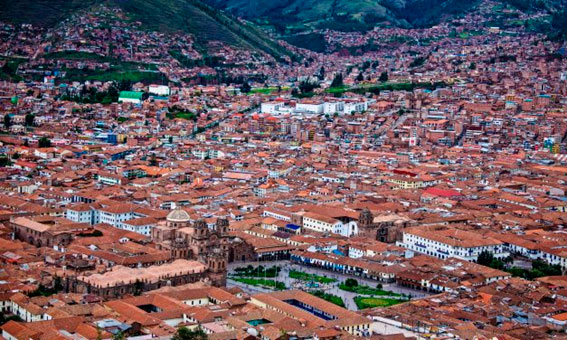
Elevation
The city is located in a basin with an average elevation of 3,400 meters (11,120 ft). Around the city, mountains peaks rise to 4,000 meters and offer some protection from the harsh highland climate. Elevations in the nearby Sacred Valley are much lower, averaging 2,870 m (9,420 ft), while Machu Picchu is even lower at 2,430 meters (7,972 feet).
Climate
Cusco city has a highland climate. Days are warm and nights are cold. Temperatures stay fairly constant throughout the year. See Weather for details.
Altitude Sickness
Altitude sickness is a concern for travelers arriving directly from lower elevations. Minor symptoms include headache, fatigue, insomnia, and loss of appetite. Acclimation varies widely by individual. Most people are able to adjust within a day or two. Severe reactions) to the altitude are rare and hard to predict. Before you travel, ask your doctor about medications to prevent altitude sickness. During your visit to Cusco, keep hydrated, avoid heavy meals, and try the local remedy, coca leaf tea.
Cusco City Weather
Cusco’s highland climate means temperatures are fairly constant throughout the year.
Average Temperatures
Daytime: 19-20°C
Nightime: 1-8°C
*Note that nighttime temperature are warmer in the rainy season, colder in the dry season. Snowfall in Cusco city is extremely rare.
Cusco city experience two seasons.
- Dry season is from May to August. Strong daytime sunshine warms the city’s Inca walls, but temperatures plummet to freezing at night. Wear sunscreen and light clothing (pants and long-sleeve shirts) to protect from UV rays. At night, bundle up with thermal base layers, fleece and a windbreaker or a warm coat.
- Rainy season is from December to March. It rarely rains all day. You’ll experience anything from drizzle to moderate rain during the day, while thunderstorms are most common in the evening. Carry an umbrella during the day and pack a water resistant jacket.
What to pack: Rainy season or dry, you want to be prepared for all weather conditions on a trip to Cusco. This doesn’t mean you have to pack your entire closet! Instead, plan to dress in layers that you can add and remove as the temperature changes throughout the day.
Peak Travel Season
Peak travel season in Cusco coincides with the dry season: June, July, and August. December and the beginning of January are also popular times to visit.
Low season coincides with the rainy season. One of the benefits of travel during these months is that sites are less crowded. However, greater flexibility is required because heavy rains can cause flight delays going in and out of Cusco city. Road closures due to landslides are also possible.
February sees the lowest number of tourists. The Inca Trail is closed for maintenance during this month. Alternative treks such as Salkantay and Lares remain in operation, but snow and heavy rain in the high mountains means the experience will be wet, muddy and sometimes dangerous.
Best Time to Visit Cusco
For good weather and fewer crowds, visit Cusco in the shoulder months of April, May, September or October.
To experience the vibrancy of Cusco’s cultural traditions, plan your trip to coincide with these festival dates:
- March/April (moveable date) – Semana Santa, Señor de los Temblores
- June – Corpus Christi and Inti Raymi
- July – anniversary of Machu Picchu, Peruvian independence
- December 24 – Santurantikuy (Christmas Eve handicrafts fair)
- December 31 – New Year’s Eve party on Plaza de Armas (popular destination for Peruvian tourists)
*Note that travel during peak times and holidays requires advance reservations for the best choice of hotels, trains, treks and other services.
Plaza de Armas
The geographic and cultural heart of a magical city, the Plaza de Armas is a must see for any traveler who wishes to experience the color and character of Cusco.
The geographic and cultural heart of a magical city, the Plaza de Armas is a must see for any traveler who wishes to experience the color and character of Cusco. In Inca times, the square was called Huacaypata, and it was twice as big as it is today. The plaza was the main stage for the empire’s most important rituals and it was surrounded by royal palaces and temples to principal deities. After the conquest in 1535, Spaniards destroyed most of these constructions and built European-style churches and mansions in their place. Today, the Plaza de Armas exemplifies Cusco’s hybrid architecture where pre-Columbian, colonial, and modern histories are layered one on top of the other
Cusco’s Plaza de Armas was the stage for major historical events in Peru’s history, including the execution of the colonial rebel leader Tupac Amaru II in 1781 and the declaration of Peru’s independence from Spain in 1814 during the Cusco rebellion. In the present-day, the Plaza is the stage for cultural festivals throughout the year, including Inti Raymi, Semana Santa, and Santurantikuy (Christmas Eve handicrafts market). For unbeatable people-watching, go to the Plaza at any time of day or night and you’ll be treated to a feast of sights and sounds.
Plazoleta San Blas
The picturesque Plazoleta San Blas is home to San Blas Church and a quaint collection of whitewashed adobe buildings embellished with cobalt blue balconies and red tiled roofs. This is the heart of Barrio San Blas, which has existed as a zone for artisanry since the time of the Inca Empire. Today, it remains the preferred residence of artists from Cusco and across Peru who open their studios and workshop to visitors eager to see examples of embroidery, sculpture, ceramics, metalwork (gold and silver), woodwork and stonework.
San Blas also hosts a concentration of accommodation ranging from 5 star hotels to backpacker hostels and every category in between, alongside an endless number of cafes, restaurants, bars, and nightclubs. Pick any of the narrow streets that branch off from the plaza and start exploring! On Saturday, the plaza is the site of the Artisan’s Market where you can buy handmade crafts directly from local artists.
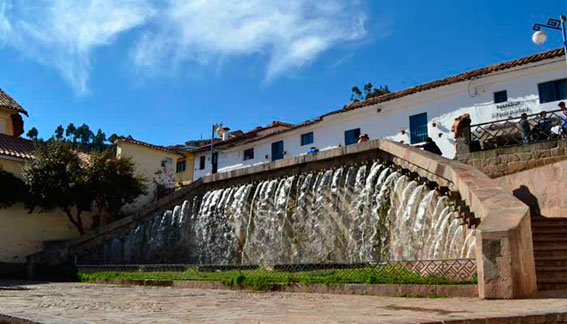
Fountain & Inca Statue
The photogenic centerpiece of Cusco’s Plaza de Armas is a cast-iron ornamental fountain designed by a French sculptor, manufactured in New York, and installed on the Plaza in 1872. From 1913-1969, the fountain was topped with a statue of an “Apache,” wearing buckskin clothing, a feathered headdress and carrying a bow and arrow typical of native (North) Americans. There are many theories to explain how and why this statue, which had no direct relation to the history of the Andes and its people, ended up in Cusco, but the most likely explanation is that it was purchased by Albert Giesecke, a professor from Philadelphia, U.S. who served as rector of UNSAAC and later mayor of Cusco in the early and mid-1900s.
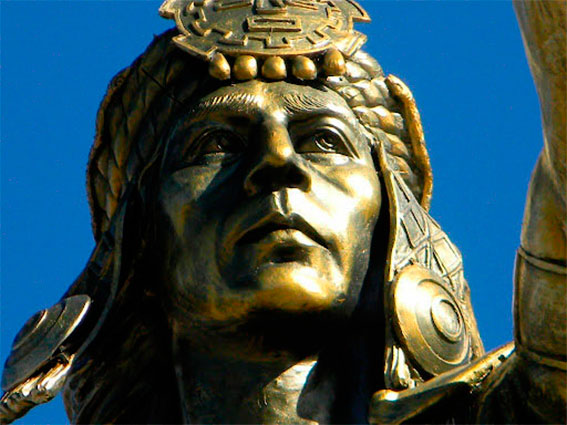
The current statue of the Inca was placed on the fountain in 2011 to commemorate the 100th anniversary of Machu Picchu’s discovery. Not without controversy however, as some people argue that the statue was installed without asking for input from Cusco’s citizens and that it further violates resolutions set by UNESCO and the Peruvian government that prohibit alterations to cultural patrimony sites. As of 2016, the statue remains in place. In the weeks leading up to Inti Raymi, the fountain is covered with a faux-stone platform that includes a stairway which tourists can climb to take photos beside the Inca.
Twelve Angle Stone (Hatunrumiyoc)
Hidden away in a narrow pedestrian alley called Hatunrumiyoc (Stone Street) is a truly impressive example of Inca stone architecture. The alley has high walls on either side. One of these belongs to the Archbishop’s Palace and is sculpted from smoothly polished granite rocks that look like giant puzzle pieces. Stone is fitted to stone so perfectly that not even a razor blade can be squeezed in between. In the middle of the wall is the Twelve Angle Stone, known in Spanish as the “piedra de 12 angulos.” It is a rare and extraordinary sight to see, certainly among the “musts” in Cusco.
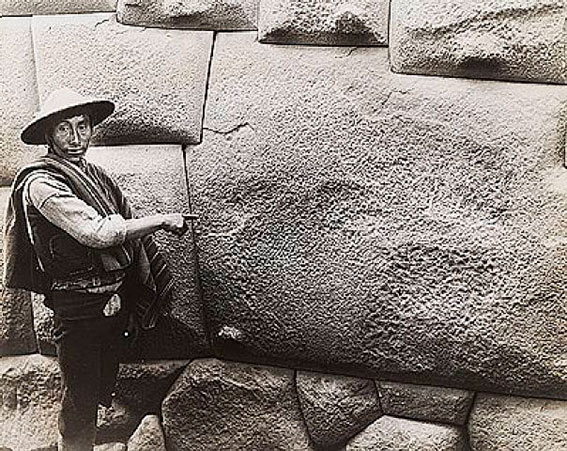
How to find it: From the Cathedral, walk up Calle Triunfo to the Archbishop’s Palace, enter the alley (Hatunrumiyoc) and look on the right side. From San Blas, walk down Cuesta San Blas, enter the alley, continue past the shops. Look for a man dressed in the costumed of an Inca king. He usually stands near the rock and occasionally shoos away anyone who tries to touch the rock.
Cuesta San Blas
You’ll be huffing and puffing by the time you reach the top of the steep cobblestoned lane called Cuesta San Blas, but you’ll arrive at the scenic Plazoleta San Blas, where exploration of the bohemian heart of Cusco awaits. Art galleries, small restaurants, and a few hotels line either side of the street. Don’t forget to look behind you for beautiful views of the historic center.
How to get there: From the Plaza de Armas, take Triunfo Street to Hatun Rumiyoc. At the intersection with Choquechaka Street, start going up.
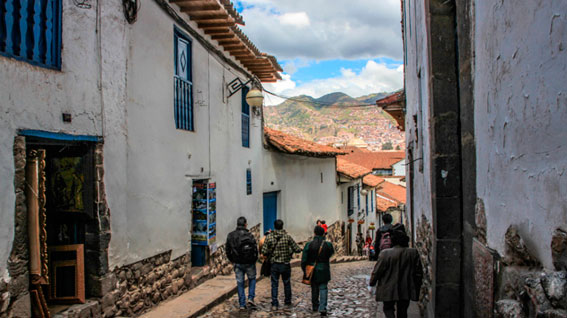
Inca Pachacuteq Monument
Located on a roundabout on the edge of the Wanchaq neighborhood in Cusco, a tall stone tower topped with a bronze sculpture designed by the Cusqueño sculptor Fausto Espinoza pays homage to the Inca Pachacutec. The tower is actually a museum with 6 floors of exhibits that trace the life and legend of the Inca Empire’s most accomplished king. Sources include infographics and drawings taken from works of Inca Garcilaso de la Vega, Guaman Poma de Ayala, Bernabe Cobo and other colonial-era chroniclers as well as more recent ethnographic and anthropological studies and existing oral traditions. A terrace at the very top of the tower provides excellent views over the city and the mountains that surround it.
Location: Óvalo Pachacutec
Admission: S/.2 included in Cusco Tourist Ticket
Hours: daily, 09:00 to 19:00 hrs
Cristo Blanco
The white Christ statue atop a hill overlooking Cusco is visible from almost any point in the historic center. From its base, you can get stunning panoramic views of the Cusco valley. On clear days you can spot the 6,384-meter snow-capped peak of Ausangate more than 100 kilometers away. The statue is 8 meters (26 feet) tall and looks like a scaled-down version of Rio de Janeiro’s art deco Christ the Redeemer statue. It’s been in place since 1945, when a community of expatriate Palestinians donated funds to make the statue as a symbol of thanks for the hospitality shown to them by Cusqueños. Local artist Francisco Olazo Allende sculpted the statue in his San Blas workshop before it was moved to its current position.
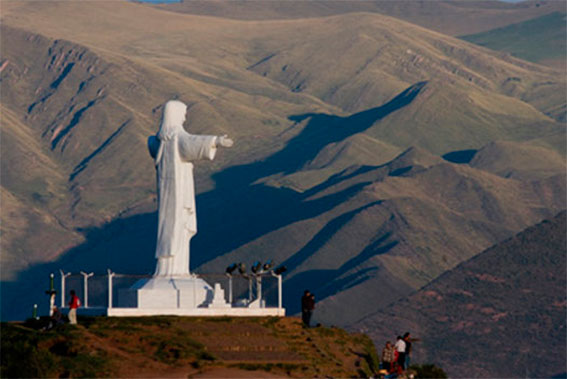
If you’re visiting Sacsayhuaman, the statue is a short 10 minute walk from the ruins. Otherwise you can get there by taxi from the historic center or by foot (about 30 minutes from the Plaza de Armas).
Cusco Cathedral (Plaza de Armas)
The history of colonial Cusco goes hand-in-hand with its churches and none is more iconic than the Cusco Cathedral. Also known as the Cathedral Basilica of the Assumption of the Virgin, it was built on the site of the palace of Viracocha Inca using stones from that palace and from Sacsayhuaman. Construction for the church began in 1560 and was completed nearly 100 years later in 1656.
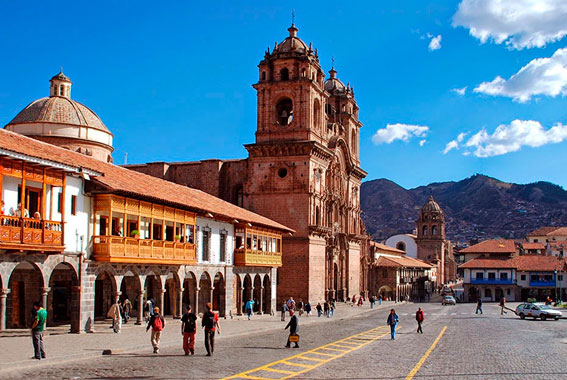 The church ground plan covers an area of 1 acre in the shape of a cross. Two smaller churches, Iglesia del Triunfo (Cusco’s first Catholic church built in 1539) and the Iglesia de la Sagrada Familia, sit on either side of the Cathedral and connect to it via the transept.
The church ground plan covers an area of 1 acre in the shape of a cross. Two smaller churches, Iglesia del Triunfo (Cusco’s first Catholic church built in 1539) and the Iglesia de la Sagrada Familia, sit on either side of the Cathedral and connect to it via the transept.
The church exterior is an example of Cusco’s gorgeous colonial stonework, while the interior houses a treasure trove of paintings from the famed Escuela Cuzqueña (school of religious art) as well as magnificent altars made from carved granite and gilded wood. Of particular note is the painting of the Last Supper, attributed to the native Cusqueñan artist Marcos Zapata, which features a plate of cuy (guinea pig) on the table.
Note that the Cathedral is open to the public with payment of admission, except during masses and on special dates such as Corpus Christi. Camera-toting tourists who are obviously not there for worship may be turned away at the door.
Location: Plaza de Armas
Fee: 25 Soles, or boleto religioso
Visiting Hours: Daily, 10:00 – 17:45 hrs
Mass: Daily, 06:00, 07:00, 08:00 & 09:00 hrs
Church of the Society of Jesus (Iglesia de La Compañía de Jesús)
Iglesia de La Compañía de Jesús is the second church on the Plaza de Armas. The beauty of its andesite stone facade rivals that of the Cathedral. The site was originally the palace of Huayna Capac, awarded to Hernando Pizarro as part of the spoils of conquest, and then bought by an elite Cusco family who donated it to the Jesuit order.
The church is considered a fine example of colonial baroque architecture. Construction began in 1571, but the church was demolished in the 1650 earthquake, and finally completed again in 1668. Inside, you’ll see a magnificent main altar carved from cedar wood and covered in gold leaf as well as an excellent collection of Cusco school paintings. Look for the portraits depicting marriages between elite Spanish men and indigenous Quechua women descended from noble lineages. Climb to the choir on the second floor for stunning views over the Plaza.

Location: Plaza de Armas
Fee: S/15 or with boleto religioso
Hours: 09:00-11:30 hrs & 13:00-17:30 hrs
Santa Catalina Church and Monastery (Iglesia y Monasterio de Santa Catalina)
Built between 1601 and 1610 on the former site of the Acllahuasi (House of the Chosen Women or Virgins of the Sun, where the empire’s most beautiful women were kept in seclusion), the Santa Catalina monastery boasts beautiful stone architecture and one of the most complete collections of colonial religious art in the city, including 4 paintings of the Señor de los Temblores, the patron saint of Cusco.
The convent was established by 24 nuns from the original Santa Catalina monastery in Arequipa. A major volcanic eruption in 1600 destroyed the Arequipa convent and so the nuns moved to Cusco. Today, the church is a must see for its beautiful Roman arches, wall murals, and for a collection of artifacts that paint a vivid portrait of religious life in the colonial era.
Address: Santa Catalina Angosta 401
Admission: 8 soles
Hours: Monday to Saturday: 08:30 to 17:30 hrs. – Sunday: 14:00 to 17:00 hrs.
San Blas Church
Cusco’s oldest parish church, built on the ruins of a temple to Illapa (god of thunder and lightning), displays a modest stucco facade and a limestone belfry. A wooden door painted cobalt-blue gives entrance to the church’s interior and its star attraction: a magnificent altar carved from a single piece of cedar wood and covered in gold leaf. The altar is regarded as the city’s most remarkable example of Andean baroque woodwork. Other notable treasures include paintings and sculptures from the Cusco school of religious art.

Address: Plazoleta San Blas
Admission: boleto turístico; S/15 adults, S/7.50 students;
Hours: Mon-Sat 14:00-17:30
San Francisco Church (Iglesia San Francisco)
In contrast to the ornate facades of many Cusco churches, Iglesia San Francisco has plain stone walls. Built on property belonging to Hernando Pizarro, the church’s construction began in 1645, was damaged in 1650, but was completed one year later, in 1651. A single square-shaped tower contains six bells of different sizes. Unfortunately many of the original altarpieces were replaced over the years, but the church interior remains impressive with its high vaulted ceilings and a 17th century carved wood choir. The attached museum in the church sacristy has a massive canvas painting (12 meters high by 9 meters long) depicting the genealogy of the Franciscan order.
Recommended for fans of religious art and architecture.
Location: Plaza San Francisco
Admission: museum S / 5.00; (admission to the church is free)
Hours: museum weekdays 09:00 to 12:00 hrs and 15:00 to 17:00 hrs; church: Monday to Saturday from 06:30 to 08:00 hrs and from 17:30 to 19:30 hrs; Sundays from 6:30 to 12:00 hrs and 17:00 to 20:00 hrs
La Merced Temple & Monastery – Templo y Convento de La Merced
Until 1700, elegant La Merced church was the mother church (principal church) of the Mercedarian order for all of South America and today it is a treasure for its architecture and interior furnishing. The original church building was severely damaged in the 1650 earthquake and most of the current building dates from the 17th and 18th centuries. La Merced is particularly notable for its stunning white stone cloisters, the only ones in Cusco made entirely of stone and regarded as a masterpiece of the Cusco baroque style. The convent museum displays a gold monstrance (a cup that holds the host) measuring 1.2 meters tall and weighing 22.2 kilograms, alongside other pieces of fantastically intricate liturgical jewelry. Inside the church under the main altar, a crypt contains the remains of Diego de Almagro, Gonzalo Pizarro and other conquistadors.
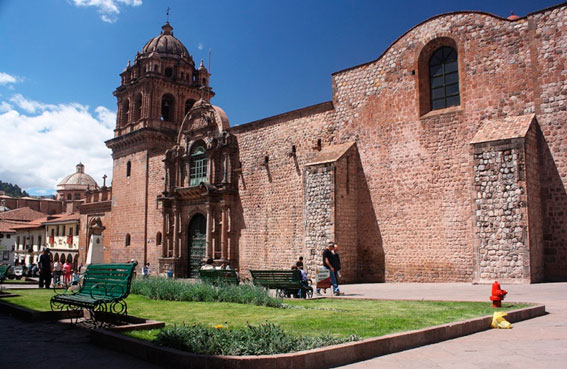 Location: Calle Mantas in front of Plazoleta Espinar
Location: Calle Mantas in front of Plazoleta Espinar
Admission: S/.2
Hours: cloisters Monday to Saturday 09:00 to 12:00 hrs and 14:30 to 17:00 hrs; church worship daily 07:00 to 09:00 hrs and 17:00 to 19:30 hrs
Santo Domingo Church / Qorikancha
Iglesia Santo Domingo encloses one of Cusco’s most impressive Inca ruins, the Qorikancha or Temple of the Sun. According to chronicles written after the Spanish conquest, it was the largest and richest temple in all of South America, filled with gold, silver, and precious jewels. Inca oral traditions indicate that the temple, dedicated to worship of the sun God Inti, was built during the reign of Manco Capac in the 12th century atop a pre-existing temple. During that time it was known by the name Intiwasi or Inticancha. Pachacutec ordered the temple rebuilt during his rule and gave it the name Qorikancha. In the Quechua language, “qori” means gold and “kancha” means place.
 Beginning in 1536, Santo Domingo church was built upon the ruins of the Qorikancha, but tantalizing vestiges of the former Inca temple were kept intact. The most intriguing feature is a exceptionally well-crafted semicircular wall that can be seen from Avenida El Sol. Within the church, smaller structures include temples to Andean deities, Killa (Moon), Chasqa (Venus star), Illapa (thunder and lightning), and K’uychi (Rainbow). Each temple displays the incredible precision of Inca stonemasonry, with seismically resistant trapezoidal walls made from finely cut stones joined without mortar. The exceptional stonework of the Inca, combined with the layers of construction from colonial times to the present, make this one of the must-sees on a Cusco tour.
Beginning in 1536, Santo Domingo church was built upon the ruins of the Qorikancha, but tantalizing vestiges of the former Inca temple were kept intact. The most intriguing feature is a exceptionally well-crafted semicircular wall that can be seen from Avenida El Sol. Within the church, smaller structures include temples to Andean deities, Killa (Moon), Chasqa (Venus star), Illapa (thunder and lightning), and K’uychi (Rainbow). Each temple displays the incredible precision of Inca stonemasonry, with seismically resistant trapezoidal walls made from finely cut stones joined without mortar. The exceptional stonework of the Inca, combined with the layers of construction from colonial times to the present, make this one of the must-sees on a Cusco tour.
Address: Santo Domingo Church
Admission: S/.10.00 (Not included in the Cusco Tourist Ticket)
Hours: Monday to Saturday 08:30 to 17:30 and Sunday 14:00 to 17:00 hrs.
Santa Clara Church and Monastery – Iglesia y Convento de Santa Clara
Established in 1549 as the city’s first convent, Santa Clara monastery housed the daughters born of unions between conquistadors and Andean women. (The book Colonial Habits by historian Kathryn Burns details the central roles played by Clarist nuns in the economic affairs of the city including managing properties and negotiating business loans.) The solid construction of the church and convent ensured that it was one of the few buildings not destroyed in the massive earthquake of 1650. Inside the church, the altarpieces (called retablos in Spanish) are covered in mirrors, producing a stunning visual effect.
Location: Santa Clara s/n
Admission: free
Hours: Daily 09:00 to 12:00 hrs and 15:00-1700 hrs; church open during morning services
San Cristobal Church – Iglesia San Cristobal
Located on Calle Resbalosa (Slippery Street) and accessible from the Plaza de Armas via a series of steeply inclined lanes, Iglesia San Cristobal is one of Cusco’s oldest. In Inca times, the site was part Qollqampata palace, belonging to the lineage of Manco Inca. Remnants of Inca buildings are still visible around the church. According to oral tradition, Cristobal Paulla, indigenous lord of Qollqampata in the years after the Conquest, sponsored construction of the church to show his devotion to Christianity. The church has a wide terrace with views over the city where people like to hang out. Inside the church, you can see a statue of the patron saint San Cristobal, who is taken out every year as part of the Corpus Christi procession.
Location: Plazoleta San Cristobal
Admission: S/.10 or boleto religioso
Hours: daily 10:00 to 18:00hrs
Museum Casa Concha (Museo Casa Concha)
Opened in 2011, Casa Concha holds the largest collection of Machu Picchu artifacts in the world. The objects on exhibit were found by Hiram Bingham during his excavations at Machu Picchu from 1911-1915, sent to the Peabody Museum at Yale University, and returned to Peru nearly 100 years after their removal.
The museum comprises 10 exhibition rooms divided between two floors. The 360 pieces on display include skeletal remains, ceramics and stone objects. A collection of Bingham’s original photographs and a scale model of the ruins add more detail to the story of the ruins. Be sure to watch the short video by researcher Richard Burger which summarizes the facts and mysteries of Machu Picchu.
Address: 320 Santa Catalina Ancha
Admission: Foreigners S/20; Nationals S/10
Hours: Mon-Sat 09:00 to 17:00 hrs; Closed on Sunday
Pre-Columbian Art Museum – Museo de Arte Precolombino, MAP
MAP displays 450 pieces borrowed from the extensive repository of the Larco Museum in Lima, considered one of the finest museums of pre-Columbian culture in the world.
The museum in Cusco occupies a colonial house that was once the residence of conquistador Alfonso Diaz. The mansion suffered decades of disrepair and was finally restored in 2003. The collection includes artifacts spanning nearly 3 millennia of Peruvian history (1250 BC to AD 1532) and from diverse pre-Columbian cultures including the Nasca, Mochica, Huari, Chancay, and Inca.
Visit the MAP cafe, located in the courtyard, to enjoy a gourmet lunch or dinner in an elegant setting.
 Location: Plaza Nazarenas 231
Location: Plaza Nazarenas 231
Admission: S/20
Hours: daily 9:00 to 20:00 hrs
Inka Museum – Museo Inka
As its name suggests, the Museo Inka is dedicated to comprehensive exploration of the Inca past via displays of ceramics, textiles, mummies, jewelry, qeros (drinking vessels), and more. Visitors to the museum learn about the mythical origins of the Incas, the history of pre-Inca and Inca settlement in and around Cusco, and the different ecological zones from the jungle to the high altitude plains that were connected by ancient trade networks.
The museum occupies one of Cusco’s oldest colonial homes, which was previously the palace of Huascar. Artisans sell wares and textiles in the interior courtyard.
Location: Cuesta del Almirante 103
Admission: S/.10
Hours: Monday to Friday 08:00-18:00 hrs; Saturday 09:00-16:00 hrs
Museum of Religious Art – Museo de Arte Religioso
Founded in 1969, this museum is housed in the Archbishop’s Palace, formerly the palace of Inca Roca. The exterior of the building provides a stunning example of hybrid architecture, with finely sculpted Inca stone walls on the lower sections gradually giving way to whitewashed adobe walls and a red-tiled roof. Other details are representative of the colonial period, including a portal entrance with Moorish style doors and a cloistered patio with tiled walls and a central fountain. The museum’s collection includes paintings as well as colonial-era furnishings that transport visitors to a bygone era of colonial grandeur.
Location: corner of Herrajes and Hatun Rumiyoq streets
Admission: S/15 or boleto religioso
Hours: Monday to Saturday from 08:00 to 11:30 hrs and from 15:00 to 17:30 hrs; Sunday from 14:00 to 17:30 hrs
Coca Museum (Museo de la Coca)
In Andean cultures past and present, the coca leaf has always been revered as a sacred plant. You can learn more about the cultural significance of the coca plant as well as its modern uses and abuses with a visit to the Museo de la Coca in Cusco. Exhibits detail how the plant is cultivated, its botanical and medicinal properties, and recent issues with drug trafficking and cocaine addiction. The attached Coca Store sells chocolates, candies, and soft drinks and other products that use coca as an ingredient.
Location: Palacio 122
Admission: S/. 10 (admission to the store is free)
Hours: Monday to Sunday 09:00 to 20:00 hrs
Museo Hilario Mendivil
Cusco has been a gathering place for artists since before the colonial era, but the 20th century artist Hilario Mendivil has earned a spot among the best with his trademark long-necked archangels decked out in elegant costumes. Mendivil’s children have also adopted the style, and today, members of the family have their studios scattered throughout San Blas. Señor Hilario died in 1977, but his original studio is open to the public as the Hilario Mendivil Museum.
Location: Plazoleta San Blas 634
Admission: free
Hours: Monday to Saturday 09:00 to 13:00 hrs and 14:00 to 18:00 hrs
Historic Regional Museum (Museo Histórico Regional)
Formerly known as the Museo Virreinal, the Museo Histórico Regional was moved to its current location and given a new name after the INC (Peru’s National Culture Institute) acquired the childhood home of the Inca Garcilaso de la Vega. Born in 1539, Garcilaso was the mestizo son of a Spanish colonial administrator and an Inca princess. Garcilaso is famous as the author of “Los Comentarios Reales,” which described Inca traditions and customs before the Conquest based on oral traditions that he learned from his mother’s family.
Also known as Casa Garcilaso, the museum opened in 2010 and has exhibition rooms with archeological objects as well as material artifacts from Cusco’s viceregal, republican, and contemporary periods. Other displays delve into specific themes, such as the life and legend of the rebel leader Tupac Amaru II.
Location: Corner of Calle Garcilaso and Calle Heladeros s/n
Admission: Cusco Tourist Ticket, Foreigners General: S/. 130
Hours: Daily 08:00 to 17:00 hrs; closed on holidays
Choco Museum Cusco (Choco Museo Cusco)
According to theworlds50best.com, Cusco is the only city in Peru that both produces and consumes its own cacao. (Most cacao is exported to chocolate makers abroad.) Among the local chocolate makers, the ChocoMuseo in Cusco is a place where visitor can learn more about the process from bean to bar by participating in one of the museum’s workshops. With or without a workshop, the cafe is open to visitors seeking to enjoy edible and drinkable treats from a balcony overlooking Plaza Regocijo. After a long days of sightseeing, what could be better than chocolate?
Location: Calle Garcilaso 210, 2nd floor
Hours: Museum open daily 09:00 to 19:00 hrs; Cafe open daily from 08:00 to 20:00 hrs
Irk’i Yachay Museum – Museo Irk’i Yachay
Open since 1999, this small museum, whose name Irk’i Yachay means “Wisdom of the Children,” displays arts and crafts produced by Quechua children from rural Andean communities around Cusco. The museum is a project of Ayllu Yupaychay, a non-profit organization that works to improve primary education for Quechua children using arts-based methodologies. As of this writing (July 2015), the museum is undergoing renovation and is open by appointment only.
Location: Calle Teatro 344
Admission: free
Hours: with prior appointment; call 084- 241416
Museum of Popular Art (Museo de Arte)
The underrated Museo de Arte Popular is home to paintings, sculptures and masks by masters of popular art in Cusco as well as historical photographs of the city. The museum was founded in 1937 by the Instituto Americano de Arte, the members of which were responsible for resurrecting the annual Santurantikuy festival on Christmas Eve. Representative works by notable 20th century Cusco artisans include the elongated-neck figures of Hilario and Georgina Mendivil, clay grotesque art sculptures by Edilberto Merida, and the “niños Manuelitos” (infant Jesus statues for nativity scenes) of Antonio Olave. Note that the museum is rather dusty and not very well-labelled, making this an ideal stop only for true fanatics of popular art.
Location: Av El Sol 103, basement of Galerias Turisticas de la Municipalidad
Admission: Cusco Tourist Ticket
Hours: Lunes a sábado de 09:00 a 13:00 y de 15:00 a 18:00 hrs
Qorikancha Site Museum (Museo de Qorikanch)
Located underneath the gardens of Santo Domingo church, this small museum has 5 rooms displaying artifacts found during excavations at Qorikancha from 1992-1995, as well as pre-Inca, Inca and colonial artifacts from Cusco, including pottery, textiles, sculptures, ceramics, musical instruments, mummies and examples of trepanned skulls (evidence of pre-Columbian brain surgery). Be sure to check out the scale model of the Qorikancha.
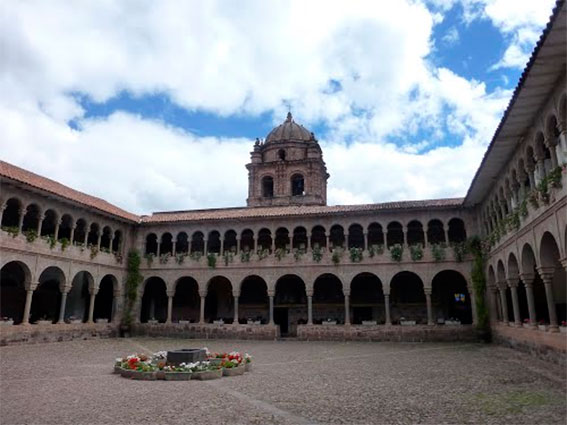 Location: Av. El Sol s/n (3rd block from Plaza de Armas)
Location: Av. El Sol s/n (3rd block from Plaza de Armas)
Center of Traditional Textiles of Cusco (Centro de Textiles Tradicionales)
Andean textile weaving is a living tradition whose techniques, styles and designs must be actively preserved and maintained. Founded in 1996, the Centro de Textiles Tradicionales seeks to provide a space where weavers from Andean communities near Cusco can learn, share and document their knowledge of weaving in order to guarantee its preservation for future generations.
The center operates a store and a textile museum. The permanent exhibit “Weaving Lives” explores the diverse functions of textiles at different stages of weavers’ lives.
Location: Av El Sol 603
Admission: free
Hours: Monday to Saturday 07:30 to 20:30 hours; Sunday 08:30 to 20:30 hours
Center of Qosqo Native Art (Centro Qosqo de Arte Nativo)
The best place to experience Cusco’s brilliantly inspiring music and dance traditions is on the streets during one of the city’s countless processions. However, if your travel dates happen to not coincide with any festivals, a performance at the Centro Qosqo de Arte Nativo provides a worthy substitute. Founded in 1924 by the first folk music and dance group in all of Peru, the center is a living repository of music and dance traditions from different districts and communities of Cusco. The nightly performances feature dancers in typical costumes and a sample of the region’s musical instruments including the Andean flute.
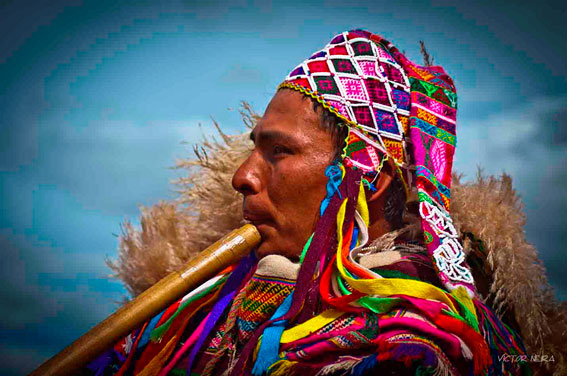 Location: Av. El Sol 604
Location: Av. El Sol 604
Admission: $5 or included in Cusco tourist ticket
Hours: daily, 19.00 to 20.30 hrs
San Pedro Market (Mercado San Pedro)
Among the sights you’ll see at Mercado San Pedro: towers of fruits and vegetables, piles of herbs, stacks of fresh flowers, every imaginable animal cut in the butcher section, wheels of cheese, barrels of nuts and dried fruits, textiles, tailors, incense, love potions, amulets, and ladies who’ll blend your favorite juice from fresh ingredients. Not to mention a whole section of food stalls serving breakfast and lunch. A set meal, called a menu, includes starter, main and dessert. Stop by to feast your eyes on local life, just remember to be courteous with your camera and ask permission before snapping a photo.
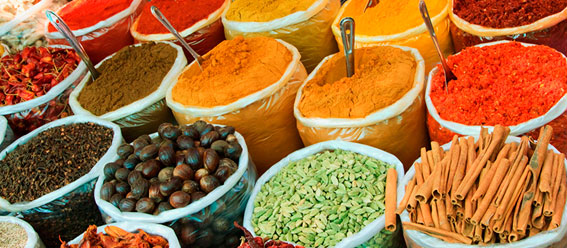 Hours: daily, until 5pm
Hours: daily, until 5pm
Planetarium
The Cusco Planetarium is a family-run project located about 15 minutes from the historic center in a small Andean-style house with adobe walls, terraced gardens and a llama corral. For astrology lovers, a visit here is an opportunity to learn about the universe and how the Inca civilization understood it. Note that advance reservations are required and the number of participants per day is limited. Groups are picked up in Cusco and transferred by car to the private observatory not far from Sacsayhuaman.
Location: Llaullipata Ecological Reserve, carretera Sacsayhuaman
Language
Spanish is the official language of Cusco. Quechua and various highland and Amazonian languages are also recognized as co-official languages.
Most tourism industry workers speak some English. Taxi drivers and small shop owners are less likely to speak English. Some agencies in Cusco also cater to speakers of French, German, Dutch and other European languages, as well as Japanese and Chinese.
For travel to Cusco, a small Spanish vocabulary (greetings, numbers and question words) can be helpful for basic interactions.
Greetings are a simple way to show politeness when interacting with people you meet during your trip to Peru.
Buenos dias – Good morning
Buenas tardes – Good afternoon
Buenas noches – Good evening
Señor/ Señora/ Señorita – Mr/ Mrs/ Miss
Dress
In Cusco, you’ll see people wearing a mix of Western clothes and Andean outfits, although the former is more common. Most people in traditional dress come from the villages around Cusco either to participate in the tourist industry or handle personal business.
Typical Andean dress consists of polleras (multilayered skirts) and hats for women, woven ponchos and chullos (wool hats with earflaps) for men. Occasionally, you’ll also see children in typical dress, sometimes with tethered llamas in tow or with baby lambs in their arms, offering to pose for photos in exchange for a few soles.
On Sundays, Cusco residents dress in tailored business suits to go to Mass or to participate in processions around the Plaza de Armas.

Travelers also exhibit a distinguishable type of dress. Trekking boots, zippered hiking pants, and fleece tops are common, while backpackers prefer colorful happy pants, chullos, and sweaters with llama motifs.
Religion
Cusco has been a Catholic city since the 16th century Spanish Conquest. There are 18 churches within the historic center alone. Protestant faiths are also practiced, but these churches are commonly located in the newer residential areas.
Cusco’s major religious festivals are perfect examples of the cultural syncretism that resulted from the post-Conquest evangelization of indigenous populations. See the list of Cusco city festivals below.

Pre-Columbian beliefs are also evident the reverence Cusqueños display for the apus (mountains) and huacas (temples) and other Inca ruins.
Food and Drink
Corn and potatoes are staples of the highlands diet and are served as accompaniments in many dishes. Consumption of cuy (guinea pig) and chicha de jora (fermented corn beer) are legacies from Inca times. Coca leaf chewing is another enduring pre-Columbian practice that you’ll see in Cusco city and throughout the Andes.
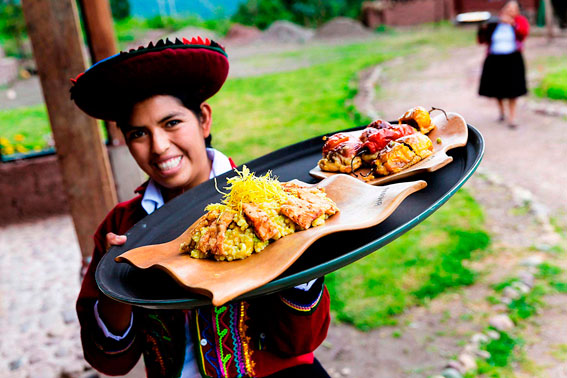
Note that Catholic Cusqueños do not consume meat (beef, pork, chicken) during Lent, but many restaurants continue to serve these dishes.
Tipping
Tours: Tipping is a great way to show your appreciation for a job well done, and warmly accepted by your guide. Below are suggested tipping ranges to give your guide for a half or full day tour.
- Half day tour: 10-30 Soles per person
- Full day tour: 20-60 Soles per person
*The ranges represent a total amount that varies with the number of people in your tour group and can be divided amongst everyone. Of course, the amount of tip you leave is at your own discretion.
Optional: Behind-the-scenes staff, including tour bus drivers, hotel porters, front desk receptionists and housekeeping staff, sometimes go above and beyond to make your trip extra special. They will also appreciate small tips of 5-10 Soles depending on the service you’ve received.
Restaurants & Bars: At a nice, sit-down restaurant it is customary to tip about 10 percent of the total. Smaller, locally owned establishments do not always expect a tip, but that doesn’t mean you cannot leave a few Soles for good service. At a bar or lounge, tipping a 1 Sole coin per beverage is a good rule of thumb.
Bargaining
Known in Spanish as regateo, the practice of haggling to get a lower price has a long history in the Andes. Within the city of Cusco, it is confined to local markets and handicraft or souvenir stalls where purchases in bulk are common. Vendors at markets will be less willing to haggle if you are buying a single item up to $10 USD. Haggling should always be attempted in a friendly manner. Do not ask for lower prices in stores where prices are clearly marked.
Another system of trade, trueque, describes a means of exchanging goods and food products. This ancient practice is common among rural Andean people, and still takes place in Pisac and Chinchero.
Festivals
Cusco has a calendar year full of festivals and in every one of them it’s possible to see the melding together of Spanish and indigenous beliefs and practices that make up Peruvian-Andean culture.
Below is a short list of Cusco’s major festivals.
 Cusco Cultural Calendar
Cusco Cultural Calendar
• Carnaval – moveable date in February, 40 days before Easter. Water fights consume Cusco and folkloric dance procession fill the streets on two consecutive weekends.
• Semana Santa – March/April (moveable date). A week-long celebration leading up to Easter Sunday.
• Corpus Christi – moveable date, Thursday in June nine weeks after Easter. A joyous event in Cusco when patron saints and virgins from churches in Cusco come to “visit” the image of Christ in the Cusco Cathedral.
• Inti Raymi – June 24, pre-Columbian winter solstice festival in southern hemisphere. Banned by Spanish officials after the conquest, the event was resurrected in the 1940s by artists and intellectuals seeking to recover the city’s indigenous roots.
• Fiestas Patrias – July 21. Like the rest of Peru, Cusco celebrates the anniversary of its independence with weeks of ceremonies, processions, music concerts, and fireworks.
• Santuranticuy – December 24. On Christmas Eve, hundred of artisans from around Cusco and from as far away as Puno gather on the Plaza de Armas to sell handmade crafts for nativity scenes.
From organized tours to unscheduled wandering, relaxing spa treatments and nightclubs that go until the early dawn, Cusco city has no shortage of activities to keep travelers busy. The following are our recommended activities.
Cusco City Tour
For travelers short on time, a guided Cusco tour is the best way to take in the highlights of South America’s oldest continuously inhabited city. Group tours typically begin in the afternoon, visiting the Qorikancha (Temple of the Sun) and the Cathedral. These two sites provide an introduction to the drama of Cusco’s history through its architecture, from the rise of the Inca Empire to its defeat by Spanish conquistadors and the building of a colonial city atop the ruins. The second part of the tour continues to archaeological sites in the hills above Cusco, including the monolithic ruins of Sacsayhuaman as well as Qenko, Puka Pukara, Tambomachay, that will together give you an idea of the scale of Inca building projects. Private tours are a better option for travelers with specific interests such as religious art or archeology.
Churches & Religious Art
In the years after the conquest, the visual arts (paintings, murals, sculptures) became a primary medium for the evangelization of Peru’s indigenous populations. To fulfill the demand for religious art, the “Escuela Cusqueña” (Cusco School of Art) was instituted to train indigenous artists in European methods, although these artists infused their work with symbols and meanings that only make sense in a local Andean context. (A famous example the depiction of a cuy (guinea pig) in a painting of the Last Supper.) Today Cusco’s churches are the principal repositories of this artistic legacy. The Religious Ticket or “Boleto Religioso” (30 soles) allows travelers to visit the Cusco Cathedral, San Cristobal Church, San Blas Church, and the Archbishop’s Palace (Museum of Religious Art) in a circuit that showcases the city’s most impressive works of colonial religious art.
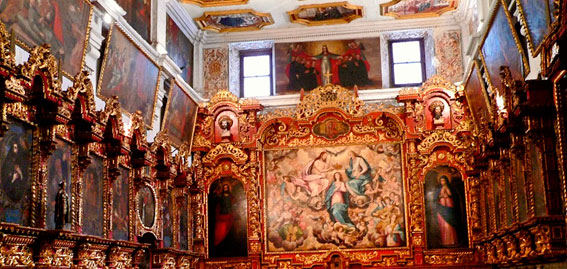
Sacred Valley Tours
In Inca times, the Sacred Valley was reserved for specialized agriculture and the Inca kings’ private estates. Today, finely sculpted terraces and enigmatic ruins dot this narrow valley famous for its singular beauty. The towns of Pisac and Ollantaytambo are the principal stops, though travelers with more time on their hands will find plenty more to see and do. It’s possible to visit the Sacred Valley on a day tour from Cusco, which is convenient for travelers who need to return to Cusco to acclimate for a trek or for an early flight out. If time allows, we highly recommend spending a night or two in the Sacred Valley, away from the bustle of Cusco and Machu Picchu.
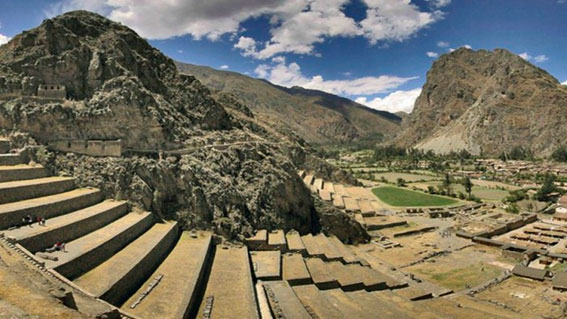
Museums
Peru’s many pre-Columbian cultures left no written histories and no Rosetta stones to help us decipher their ways of living. Instead we have artifacts and other material remains that provide tantalizing glimpses into lost civilizations. Stop by one of Cusco’s museums, such as MAP, Casa Concha (Machu PIcchu Museum), Museo Inka, or Museo de Sitio Qorikancha, to see painted ceramics, ceremonial vessels with ornate designs, textiles, weapons, mummy bundles, skulls and other remainders of Peru’s civilizations past.

Shopping
From high end boutiques selling fine jewelry and vicuna goods to handicraft stalls and local markets, Cusco has plenty of options to grab a souvenir. Alpaca wool hats, gloves, and sweaters are among the most popular items to buy. Most shops are concentrated on the main streets that branch out from the Plaza de Armas and Plaza Regocijo. For silver jewelry, check out the Andean Magic Art Jewelry store on Calle del Medio 110. For artisan goods, the streets Tandapata and Carmen Alto in Barrio San Blas are a great place to lose yourself in vintage and boutique shops. The best option for trinkets and textiles is the Centro Artesanal Cusco at the very end of Av. El Sol.
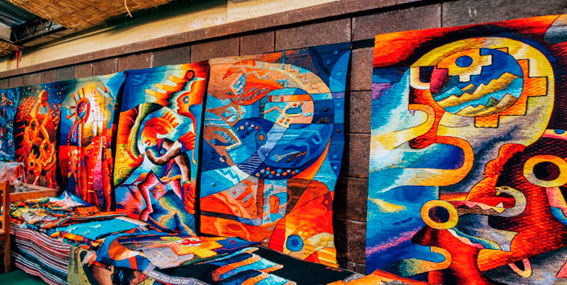
Spa/Massage Treatments
Whether you’ve finished a trek or are just trying to deal with the high altitude, your body might need some TLC after a few days in Cusco, so why not pamper yourself and spend a few hours at the spa? In Cusco, you’ll find salons that incorporate Andean medicinal knowledge of herbs and salts. Ask your hotel concierge for recommendations.

Adventure Tours
Get off the tour bus and inject some real adventure into your exploration of Cusco’s ruins with a mountain bike or horseback riding tour. You can ride between Sacsayhuaman and Tambomachay, stopping by smaller sites in between while getting views of the city and the surrounding landscape. It’s the perfect option to get away from the crowds while in Cusco. The Sacred Valley also has rafting, rock climbing, and ATV tours available.

Nightlife
Rain or shine, Cusco comes to life after dark. Pub-style bars such as Paddy’s Pub, Cross Keys, and The Muse II serve beers, cocktails, and food in cozy environments. If you prefer a more raucous scene, head to one of the dance-til-dawn night clubs which include perennial favorites Mythology, Mama Africa, Groove, Señor Frogs, and 7 Angelitos. Smaller venues such as Km 0 and Le Nomade serve drinks with a side of live music.
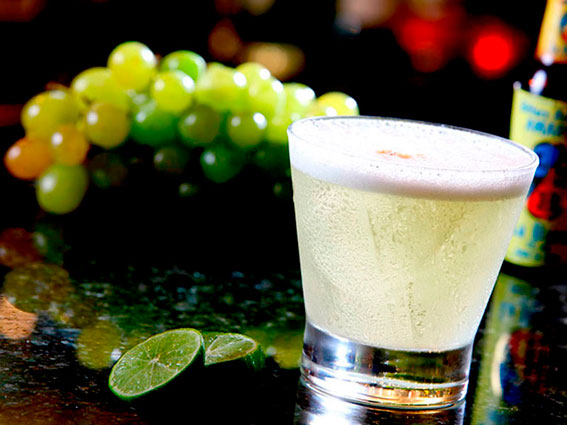

Peru is a top destination for South America travel not just for its diverse landscapes and incredible Inca ruins, but also for its contemporary cuisine. In fact, Peru in the 21st century is experiencing an extended gastronomic boom. Classic Peruvian dishes like ceviche, lomo saltado, and aji de gallina are becoming internationally known, while the nation’s top chefs are concocting delicious innovations with a heavy focus on local ingredients. Cusco’s best restaurants give travelers an opportunity to sample the range and breadth of Peruvian cooking. Picky eaters need not worry; Cusco has its fair share of pizzas, hamburgers, and other Western standards if that’s your yen.
For additional recommendations, search online restaurant guides include TripAdvisor for trending restaurants and HappyCow for vegetarian and vegan restaurants. The following are a few of our favorite places to eat in Cusco. Don’t forget to check out the menu at your hotel restaurant as these kitchens are often hidden oases of culinary goodness.
Peruvian and novo-Andean
Limo is the place to go for ceviche and delicious pisco cocktails. Make reservations and grab a table by the wide windows overlooking the Plaza de Armas. In addition to ceviche and a full sushi bar, Limo offers non-seafood Peruvian favorites like arroz chaufa (Peruvian-Chinese fried rice), cuy (guinea pig), alpaca steak, pork adobo, and more.
Address: Portal de Carnes 236, 2nd floor
Chicha is the restaurant of Peru’s celebrity chef Gaston Acurio. Local ingredients form the basis of a menu organized by geographical divisions – from the water, land, Peru, and the world. Open for lunch and dinner, Chicha Cusco is a must try for any food fanatic.
Address: Plaza Regocijo 261
Cafe Morena Peruvian Kitchen has entered the Cusco dining scene to rave reviews. Featuring traditional Peruvian cooking with a modern twist, this is a great place to try classic dishes like chicharron (deep fried pork) and lomo saltado, as well as fresh juices and smoothies.
Address: Plateros 348-B
Breakfast, pizza, burgers
Jack’s Cafe is always buzzing with customers thanks to an excellent menu that caters to Western tastes with all-day breakfasts, huge sandwiches, hearty salads and other tasty treats including stir-fries and burgers.
Address: Choquechaka 509
La Bodega 138 goes above and beyond the standard pizzerias found on every street corner of Peru’s major destinations. The focus here is on made-to-order wood-fired pizzas with your choice of gourmet toppings. Pair your pizza with a bottle of wine or glass of craft beer, ideal for carb-loading before or after a trek in the Andes.
Address: Herrajes 138
Vegetarian and vegan
Prasada Veggie Food, a literal hole-in-the-wall tucked into Calle Choquechaca, is popular among locals for its pocketbook-friendly vegan and vegetarian “snacks” including salads, sandwiches, tacos and more, all made on the spot. Perfect for a late morning or afternoon treat.
Address: Choquechaka 152
El Encuentro has three locations throughout Cusco. The lunch or dinner “menu” is reasonably priced, filling and delicious, and includes a soup, salad, entree, and tea, all for 10 soles. An a la carte menu provides more tasty options including soy and lentil burgers, pastas, and salads.
Address: Santa Catalina Ancha 384
Health
Visitors traveling from sea level to Cusco at 3,400 meters or 11,150 feet above sea level, should be aware of the possibility of altitude sickness. Most visitors to Cusco experience only minor symptoms (headache, lethargy, nausea) which usually ease within 1-2 days. If you’re planning to hike to higher elevations, plan to spend 2-3 days acclimating in Cusco before beginning the trek. If possible, try to schedule an intermediate stop at Arequipa elevation 2,328 meters (7,638 feet), to ease into the altitude.
Drinks lots of water to prevent dehydration and take it easy as your body adjusts to the altitude. Drink bottled water only and avoid drinking water from questionable sources. Agua sin gas is mineral water; agua con gas is carbonated water — both are available for sell at kiosks and small markets all over Cusco city. Ice is typically made from filtered water and safe to consume.
Safety
Cusco is considered one of the safest cities in Peru. Standard travel precautions apply: don’t leave your bags and belongings unattended and take extra care in crowded places. Leave jewelry and excess cash in the safety box at your hotel.
How to Get Around
Walking is the best way to get around the historic center of Cusco. You can walk from one side of the historic center to the other within 15-20 minutes. Around the Plaza de Armas you’ll find Cusco’s top attractions, restaurants, and nightlife options. The area around the main plaza is mostly flat, but the streets become steeply inclined when you walk toward the San Blas, San Cristobal, or Santa Ana neighborhoods.
Money
Be sure to carry local currency (Peruvian Nuevo Sol, or Soles for short) to pay for taxis, tips for guides and porters, small purchases, and meals at cafes and restaurants. Vendors are always reluctant to make change for large bills. For small purchases, it’s best to have low denomination bills and coins. Larger balances at shops, restaurants, hotels, and some tour agencies can be paid with credit card. As of August 2015, $10 USD is roughly 30 Soles.
You can find money exchange offices and ATMs throughout the historic center and on Av. El Sol. (Ask your bank about international banking fees.) For payments in USD or to exchange USD or Euros to Soles, you’ll need crisp bills with no blemishes of any kind. Bills with tiny rips, marks, and other defects will likely be rejected.
Packing Tips
Cusco city is generally warm during the day and cold at night. Bring sunblock and sunglasses for day tours, and don’t forget your warm clothes for the evenings. A thermal undershirt paired with a fleece, windproof jacket, and long pants is usually sufficient for Cusco’s 5C/40F nights.
For the rainy season, packing the right clothes to stay (relatively) dry can make the difference between an enjoyable experience and a wet, miserable one. Pack long pants made of synthetic quick drying fabric (not jeans), a rain poncho to go over your head and your backpack, and an umbrella to use during day tours.
Luggage Storage
Some legs of your Cusco trip may require you to leave your heavy luggage behind, for example to take the train to Machu Picchu (passengers are limited to 1 bag or backpack weighing 5kg/11lbs) or for a multi-day trek. This is generally not a problem as most hotels provide luggage storage for guests at no additional charge.
Plan Ahead
Traveling to Peru in the peak season (June, July, August) requires lots of planning several months in advance. This includes booking hotels in Cusco and Aguas Calientes (Machu Picchu), flights to/from Cusco, train tickets to/from Machu Picchu, Huayna Picchu tickets (limited to 400 and sell out weeks in advance) and Inca Trail permits if applicable.
Best Time to Visit Cusco
To avoid the crowds and the worst of the rains, plan your trip to Cusco for April, May, September or October.
FAQs
Travel Requirements
- Do I need a visa to travel to Peru?
With some exceptions, visitors do not need a visa to travel to Peru. However, all travelers need a passport with a minimum validity of 6 months and one blank passport page for an entry stamp. Upon arrival at any port of entry, travelers are issued a tourist card (tarjeta de migracion) good for a maximum of 183 days. Keep this card in a safe place (with your passport) as you will need it to register at hotels and to exit Peru. - Do I need vaccinations for travel to Peru?
No vaccines are required for entry, but yellow fever immunization is recommended especially for travel to the Amazon region. - Do I need to carry my passport with me in Cusco?
You will need to present your passport to check in at hotels, to board the train to Machu Picchu, to enter Machu Picchu, and to pass through Inca Trail checkpoints. For day tours, you can leave your passport in your safety deposit box at your hotel. You may carry a photocopy of your passport information page just in case.
Getting in/around/out of Cusco
- What airlines fly to Cusco?
Several daily flights connect Cusco to major destinations across Peru. From Lima to Cusco and vice versa, major airlines are LATAM (previously known as LAN), Star Peru, Peruvian Airlines, and Taca. Of these carriers, LATAM provides the highest number of options and the most reliable service, but also the most expensive fares.
Alejandro Velasco Astete International Airport (airport code: CUZ) in Cusco is located 5 kilometers (10-15 minutes) southeast of the historic center and the Plaza de Armas. - How can I get a taxi in Cusco?
Note that it is possible to walk from one side of the historic center of Cusco to the other within 10-15 minutes. One-way streets and occasional closures due to processions sometimes make it faster to go by foot than by car.
However you might need a taxi to get to the airport or bus terminal, or to visit to Sacsayhuaman or Cristo Blanco if you prefer not to hike. You can either hail a taxi from the street or arrange transport through your hotel concierge. Check for a placard or other indication that the vehicle is an official taxi. Taxis are not metered. Negotiate the fare before getting into the car. Payment is given when you reach your destination.
Few taxi drivers speak English. If your Spanish is limited, try to have as much information about your destination written down in Spanish or ask your hotel concierge to help you. - How can I get to Machu Picchu from Cusco?
Train travel is easiest and fastest way to get from Cusco or the Sacred Valley to Machu Picchu. From Poroy station (15 minutes from Cusco), the trip is 4 hours. Trains depart more frequently from Ollantaytambo (1 hour by car from Cusco) and arrive at Aguas Calientes in 2 hours.
Travelers in search of adventure can opt to hike the Inca Trail, which enters Machu Picchu through the Sun Gate. - Where can I go after/in addition to Cusco and Machu Picchu?
- Venture south to Puno and sail across the jaw-droppingly gorgeous Lake Titicaca.
- Go to Arequipa to get your fill of colonial architecture and delicious Peruvian cuisine; then head to the Colca Canyon to spot the Andean condor in flight.
- Immerse yourself in the rainforest wonders of Peru’s Amazon. From Cusco, a 45 minute flight gets you to Puerto Maldonado and a range of eco-lodges located 30-60 minutes downriver on the edge of Tambopata Reserve.
- What’s the weather like?
Cusco has two seasons: wet and dry. During the dry season, days can get warm under the sun, but temperatures drop drastically in the evening. In the rainy season, it rarely rains all day, but storms are unpredictable and range from heavy rains to light drizzle. It’s best to carry an umbrella or a rain poncho.
Health and Safety
- Can I drink tap water?
For visitors just arrived to Cusco, Peru and South America, drinking tap water is not advisable. Bottled water is available for sale at kiosks, markets, cafes, and restaurants throughout the city of Cusco. - Is it safe to drink coca leaf tea?
Mate de coca (coca leaf tea) is a popular folk remedy in Cusco and throughout the Andes; many hotels provide complimentary cups to guests on check-in. Packaged tea bags are also available at Peruvian supermarkets. Note however that possession of coca leaf tea is illegal in the U.S. - What happens if I get sick?
In case of serious illness, contact your tour operator or hotel concierge. They will be able to refer you to a clinic staffed by English-speaking doctors. - Is it safe to eat street food?
As tempting as Cusco’s street food offerings may appear, it’s best to resist the impulse to indulge. Especially if you’re in Peru for a short time, the last thing you want is to spend a day confined to your room. Avoid open containers of ketchup and other condiments (small packets are fine). Eat boiled vegetables and fruits with peels only. Use your judgement when ordering salads and ceviche (raw fish). More expensive restaurants are careful to wash with purified water and prepare food with only the freshest ingredients. - Is Cusco safe?
Cusco is fairly safe as a city, but petty theft does occur. You can take simple precautions to avoid becoming a target.- Don’t carry excessive amounts of money with you during the day. Carry only what you’ll need for the day and leave cash and personal documents in your hotel room’s safety deposit box.
- Don’t wear expensive or flashy jewelry.
- Keep electronic devices tucked away in a purse or backpack or in your hand at all times.
- Don’t hang bags on chair backs and take your bag with you when you go to the bathroom.
- Use common sense, be aware of your surroundings and trust your instincts.
